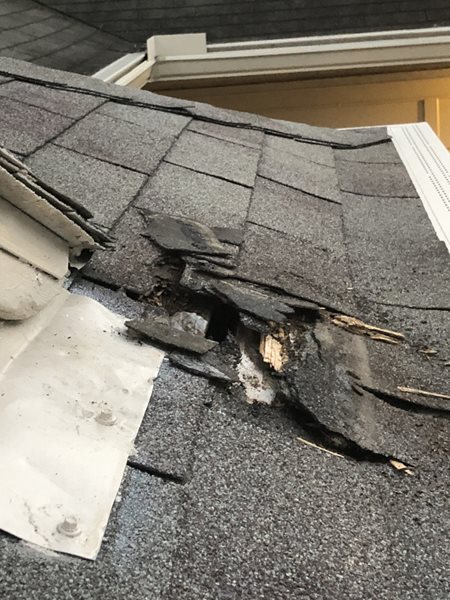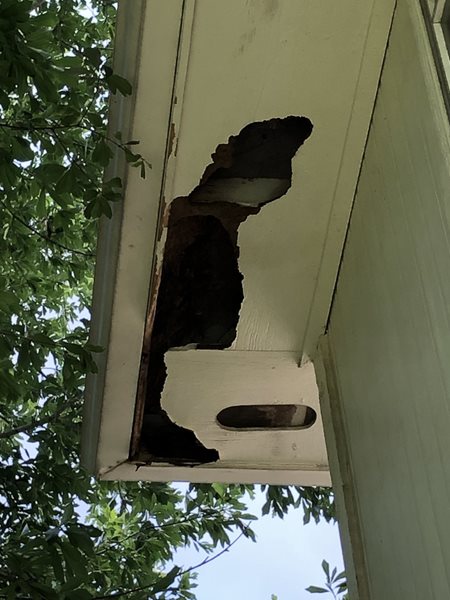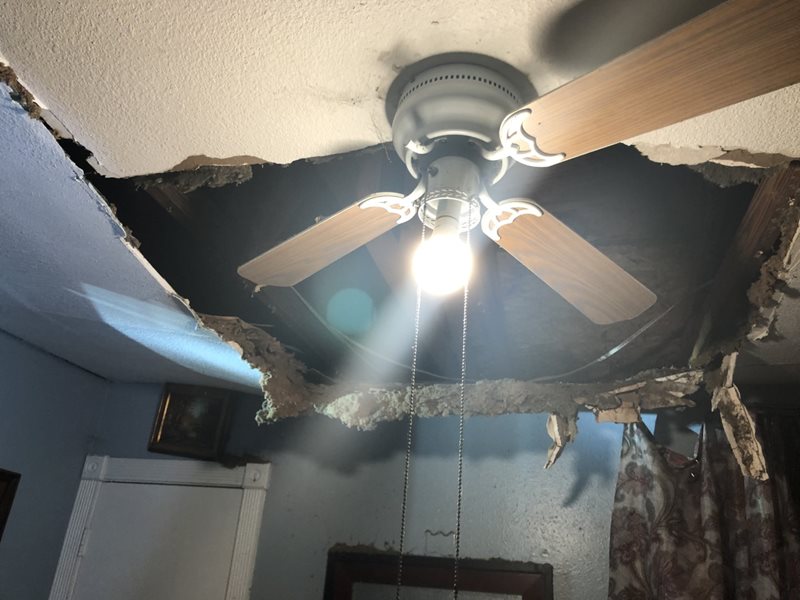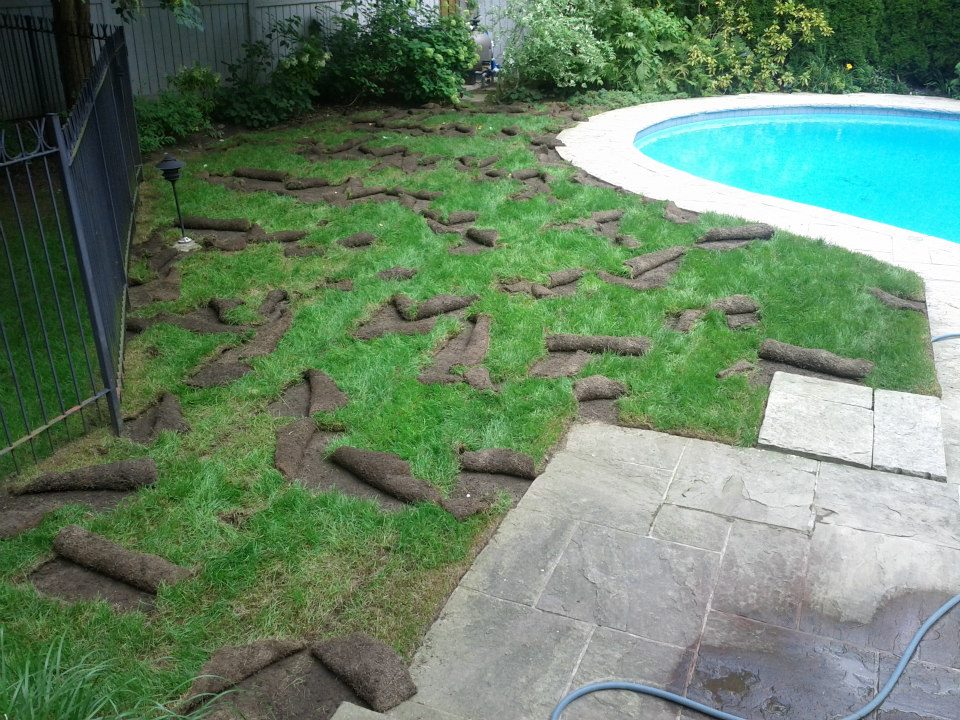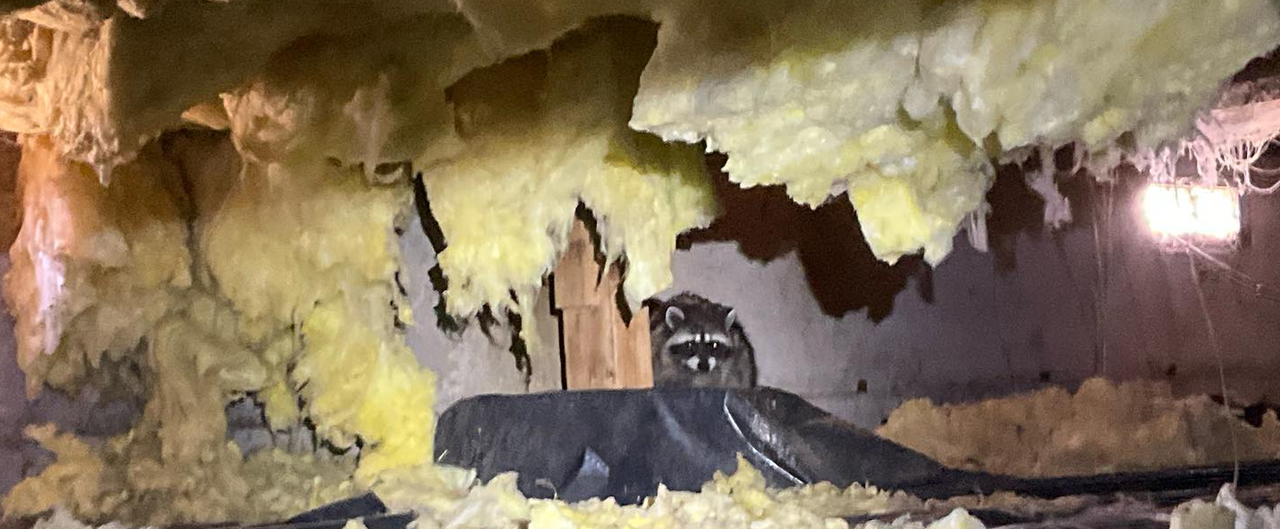
This article covers the damage from raccoon infestations which include:
- Raccoons cause damage to attics, ceilings, roofs, and walls.
- Raccoons tear through insulation, wiring, and ductwork to create nests.
- This can lead to structural damage, fire hazards, leaks, and health risks.
Need Help with Raccoon Infestation?
Find a Critter Control near you.
Raccoon damage to yards, roofs, attics, and crawl spaces costs homeowners thousands of dollars in repairs every year. A homeowner’s insurance policy might cover the repair costs but not the cost of trapping and removal. Without that part of the puzzle, your problematic guests will likely continue wreaking havoc on your home.
They’re remarkably intelligent and constantly on the hunt for food and shelter. Bird feeders, trash cans, and pet food can attract them to your home, and once they’re there, they might start looking for a home. Your attics, wall voids, and crawl spaces are prime real estate, considering they’re warm, dry, and safe. Once they’re in your home, their damage-causing habits may go unchecked.
Raccoon Damage in the House
Raccoon damage in homes can be extensive. Once these critters gain access to your house via various raccoon entry points, they may tear apart materials to build nests, search for food, and mark their territory, which can lead to a long list of structural and health concerns. They often leave a trail of damage in their wake, including shredded insulation, damaged walls, and feces and urine-contaminated areas.
Once inside your home, raccoons may reside in various areas, such as your walls or basement. Both offer warmth and protection from predators, making them attractive places to build nests. Raccoons in walls and houses can cause damage that can be expensive to repair.
Their sharp claws and teeth allow them to damage various parts of your home, including:
- Torn insulation in walls and basements
- Chewed electrical wiring, which increases the risk of fire
- Scratches and bite marks on wood and drywall
- Damaged air ducts and ventilation systems
- Accumulation of raccoon waste, which is both smelly and dangerous to your family’s health
Listen to typical signs of a raccoon in the attic
Raccoon Damage in Attics
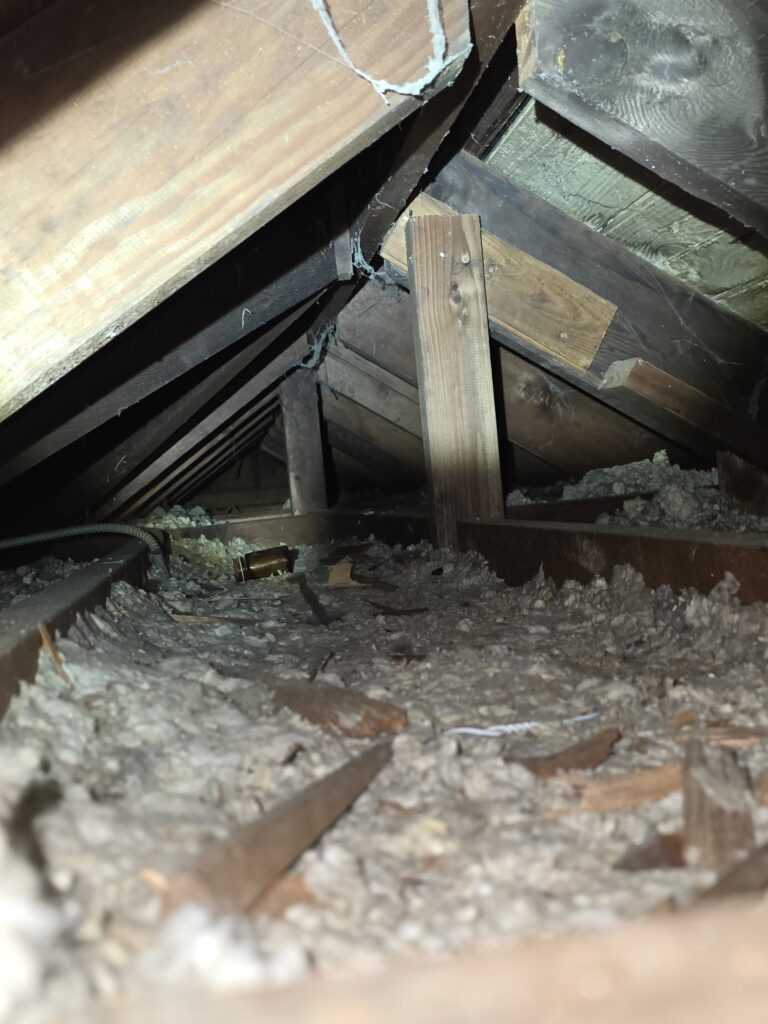
Attics are a popular area where raccoons seek refuge. They get the best of all the attic has to offer: warmth, privacy, and a lack of human traffic. These factors make attics a prime location for raccoons, especially mothers looking for a safe place to rear their young.
Unfortunately, raccoons in attic damage can be severe. They tend to reside in attics for long periods, tearing apart materials to build nests and causing structural damage in the process. For example, a mother raccoon may rip apart insulation, wire, and wood to create a cozy nest for her babies.
Their array of damage may include:
- Shredded insulation
- Torn-up ductwork and vents
- Chewed electrical wiring, which poses a fire hazard
- Scratched or damaged wooden beams and rafters
- Raccoon urine and feces contaminate the area, which can contain parasites that can be hazardous to your health
Can Raccoons Tear Through the Roof?
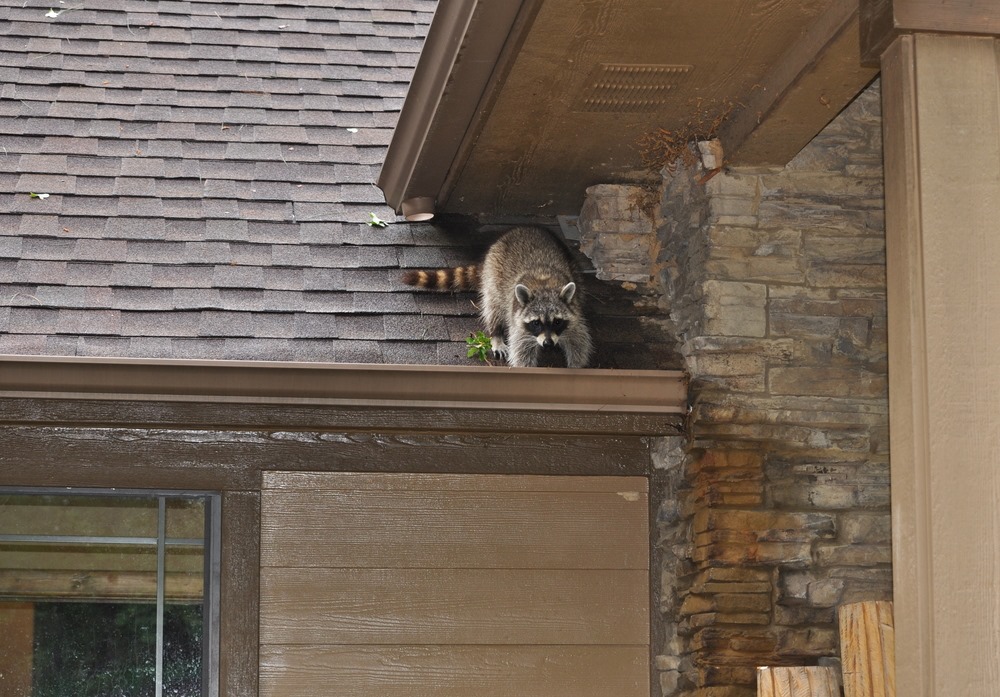
Raccoons are strong enough to tear through a roof. Their little hands are surprisingly strong and dexterous, tipped with sharp claws that, with help from their powerful teeth, can tear through roofing materials. They can rip through shingles, soffits, and even roof vents to gain access to your attic.
Once inside, they can wreak all sorts of havoc, creating nests, damaging insulation, and leaving behind waste. Raccoon roof damage can leave your home susceptible to water leaks and mold growth, which can be expensive to repair.
Raccoon Damage to Ceilings
A raccoon in an attic can damage the ceiling below. These critters can weigh up to 20 pounds, and as they scurry around and build nests, they may tear through insulation and sheetrock. That can result in sagging or even holes in the ceiling.
On top of that, if they choose your attic as their latrine, their urine can seep through the ceiling, causing stains and compromising structural integrity. If you notice ceiling damage, there’s a good chance that the infestation has progressed, and immediate action is paramount to avoid further damage.
Raccoons can weigh up to twenty pounds! This raccoon caused the ceiling to cave-in from within the attic. It feel into the living area of the house along with attic insulation and dust. Critter Control caught the raccoon with a catch pole.
Raccoon Latrine Sites
When raccoons den in residential areas, they create separate latrine sites. They consistently return to these locations, commonly found on roofs, in attics, woodpiles, haylofts, and on or under decks. They serve as the raccoons’ bathrooms.
Over time, the accumulated feces and urine can destroy insulation and saturated woodwork. The feces can contain harmful parasites, like raccoon roundworm, which can pose a serious risk to your health when you clean it up. On top of that, they can leave behind fleas and ticks, which may transfer to you or your pets.
Raccoon Nests
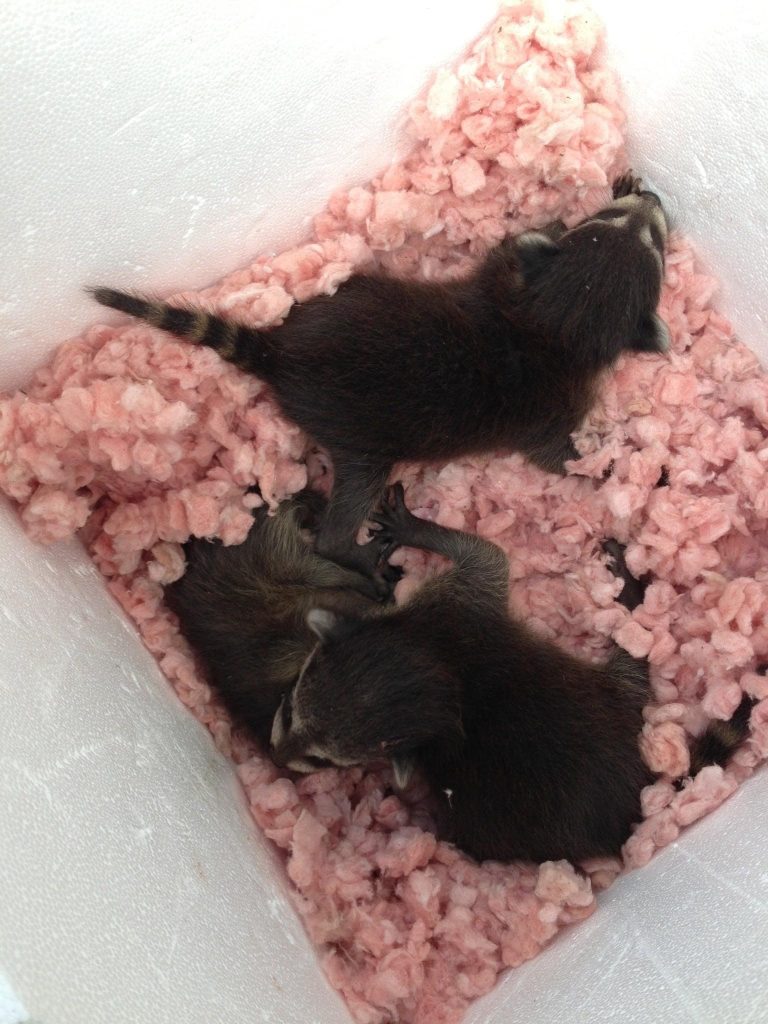
Raccoon Damage to Lawns
Your lawn is another area that may not make it out unscathed, falling prey to raccoon lawn damage. Lawns are often a great hiding place for grubs and earthworms, which are easy food sources for raccoons, especially the young ones. From mid to late summer, you might find holes and piles of sod strewn across your yard, thanks to the pests’ nightly foraging for food.
On top of that, you might find your lawn decorated with trash. These critters often sift through trash cans in hopes of finding a meal, carelessly tossing out items they don’t want along the way.
They may even destroy your flower beds or vegetable garden in search of food, ripping through the soil and plants to find what they want. In the process, they may damage your irrigation systems and outdoor structures, which can be pricey to repair (especially if they damage major irrigation components)
Grubs and earthworms are easy food sources, especially for young raccoons. From mid to late summer, homeowners may find holes and piles of sod scattered across the yard due to the pests’ nightly foraging. In addition to raccoon damage to lawns, the animals rip open trash cans and sift through the contents to find a meal.
Will Homeowner’s Insurance Cover Raccoon Damage?
Homeowner’s insurance may cover raccoon damage, but since raccoon infestations are often considered a preventable issue, this may not always be the case. Coverage varies based on your specific provider and policy, so it’s a good idea to call your insurance provider directly to ask whether raccoon damage is included.
Raccoon-Proofing Materials and Prevention
Without proper raccoon-proof architecture and methods, raccoons will find a way inside your home, whether in your attic, crawl space, or walls. So, to ensure raccoons don’t sneak into your home, you’ll need to take specific raccoon-proofing measures. These involve sealing entry points, reinforcing vulnerable areas, and using materials that raccoons can’t easily damage.
A few common raccoon-proofing materials to ward against raccoon damage include:
- Heavy-gauge steel mesh for covering vents and gaps
- Reinforced soffits and fascia boards
- Chimney caps to prevent entry
- Securing garbage cans and removing outdoor food sources
When you hire the pros at Critter Control, we’ll take care of these steps for you. After removing the offending guests, we’ll repair the damaged areas with the proper materials to keep the raccoons out for good.
Raccoon Control and Removal
Evicting raccoons from your home can be tricky. While there are DIY methods, such as scare tactics, that you could use to try to drive them away, they usually aren’t effective. Raccoons are intelligent creatures and may become familiar with humans, so the scare tactics may not prevent them from coming back (if they do initially work). In some cases, raccoon eviction can work at driving out a raccoon. If a female raccoon is living in your attic with juveniles, raccoon eviction fluid might work as a repellent. If it does, you will need to install raccoon exclusions to keep them from returning.
So, if you notice signs of raccoons on your property, it’s best to contact a professional raccoon removal service. At Critter Control, we have over 40 years of experience in animal control and can help you evict your uninvited houseguests. We prioritize safe, humane, and effective methods to remove the animals and prevent them from returning.
Contact us today at 1-800-274-8837 or complete our online contact form to learn more about our raccoon removal services.
Get them out.
Keep them out.®
Experiencing a wildlife or pest issue? We can help! Complete this form and your local Critter Control® office will contact you to assist.
- How to Get Rid of Raccoons
- Are Raccoons Dangerous?
- Raccoon Trapping Service
- Raccoon Control
- Baby Raccoons
- Dead Raccoon Removal
- Raccoon Diseases
- Do Raccoons Hibernate in Winter?
- Raccoon Diet
- Raccoon Poop
- Raccoons In Yards
- Raccoons in Basements
- Raccoons in Chimneys
- Raccoons in Crawl Spaces
- Raccoons in Houses
- Raccoons in Trash
- Raccoons in Trees
- Raccoons in Walls
- Raccoons on Roofs & in Soffits
- Raccoon Sounds
- Raccoon Tracks
- Raccoons in Attics & Ceilings
- What Does a Raccoon Look Like?
